In this Article:
What should you choose for hunting, the .270 or the .308 cartridge? Some within the hunting community say you can make a decision with a coin toss. Both are outstanding and have have stood the test of time for decades.
Having said that, the .270 and .308 have their differences, and a good hunter should know them. Our aim is to outline these differences and explain why you might prefer one over the other for hunting purposes.
I’ll start with the key points before delving into our detailed cartridge comparison below for those with a keen interest in ballistics.
.270 vs .308: Which for Hunting?
We dedicated considerable time to comparing and evaluating the performance of these two cartridges side by side. In general, there isn’t a significant difference between them—they both offer similar recoil and remain supersonic up to 500 yards. Skilled shooters have achieved notable success using either cartridge to take down various medium and large game around the globe.
That said, there are certain advantages to opting for one cartridge over the other, depending on the specific hunting conditions you face.
Hunting in Thick Brush?
Since the .308 is a heavier cartridge with a larger diameter, it necessitates a long-action rifle. This often results in a longer barrel, which can be a disadvantage in tight situations. If you’re moving through dense brush or positioned in a deer stand, the additional length can make it harder to aim swiftly and silently for your shot. In these scenarios, a shorter, lighter rifle chambered in .270 can be a more practical choice. Additionally, the .270—especially with lighter grain loads—offers reduced recoil.
Wondering which Hunting Rifle to buy? Click here to see our Editor’s Guide!
Beau, Sniper Country Editor
Require a Longer Shot?
As mentioned, both the .270 and .308 remain supersonic out to 500 yards. Nevertheless, the .308 experiences more bullet drop compared to the .270, even at shorter distances (-14.5 inches versus -11.91 inches at 300 yards—refer to our data below). At 500 yards, the difference amounts to a full 10 inches. While this might seem minor, it can significantly impact your success, especially at longer ranges.
The .270’s flatter trajectory and better resistance to wind drift generally make it the superior option. While an experienced hunter might manage the .308’s trajectory challenges, we typically recommend the .270 for its overall performance benefits.
Shooting Large Game?
At ranges of 100-200 yards, both the .270 and .308 possess sufficient stopping power to take down large game such as elk, brown bear, or moose. However, due to its larger diameter and availability in higher grain weights, the .308 generally has the edge over the .270, especially when dealing with thick-skinned or larger, tougher animals. It’s important to choose a high-quality cartridge with controlled expansion to ensure a humane and effective kill.
Our comparison also revealed that the .308 consistently surpassed the .270 in terms of bullet momentum (up to 500 yards), which is a strong indicator of better penetration, even though the .270 boasts higher average sectional density.
Shooting Medium Game (whitetail deer, feral hogs, etc) within 100-200 yards?
Both the .308 and .270 are suitable for this range. However, we’d suggest that the .270 is especially advantageous for lighter-skinned game like whitetail deer. Using a .308 on medium game can be excessive, particularly for meat hunters, as it might cause substantial damage. At this range, opting for lower grain loads with the .308 can help mitigate this issue, but the .270 is generally more efficient and less likely to cause unnecessary damage.
Affordable Hunting
Both the .308 and .270 are widely available at most ammunition stores, both online and in physical locations. They are also less affected by the supply shortages that can plague other ammunition types. However, in terms of cost, the .308 is generally more affordable. If cost is an important factor, you may want to investigate the 6.5 Creedmoor as another alternative.
.270 vs .308 Cartridge Comparison
| Category | .270 | .308 |
|---|---|---|
| Bullet weights (gr) | 120-160 | 125-70 |
| Average Muzzle Velocity (ft/s) | 2963.3 | 2733 |
| Average Recoil (ft.lb) | 19.56 | 22.15 |
| Average Supersonic limit (Yards) | 1101.25 | 1023.70 |
| Average Ballistic Coefficient | 0.438 | 0.434 |
| Average Sectional Density | 0.269 | 0.248 |
Both cartridges have proven themselves in the field over many decades and are highly regarded. We will examine the history and specifications of each, as well as delve into ballistic categories. Additionally, we’ll explore other factors such as recoil, accuracy, and ammunition availability.
Our goal isn’t to declare one cartridge superior to the other. Instead, by reviewing this information, we aim to clarify which cartridge is better suited for various hunting scenarios. Knowing the type of hunting you plan to do will help you make a more informed decision based on this article.
Specs 270 vs 308
| .308 Winchester | .270 Winchester | |
|---|---|---|
| Parent Casing | 0.3 | .30-03 |
| Bullet Diameter | 0.308†| 0.277†|
| Neck Diameter | 0.3433†| 0.308†|
| Case Length | 2.015†| 2.540†|
| Overall Length | 2.8†| 3.340†|
| Case Capacity | 56gr | 67gr |
| Max Pressure (SAAMI) | 62,000psi | 65,000psi |
Examining the casing and overall specifications of the .270 and .308 cartridges provides initial insights into their differences. The primary distinction is the bullet diameter: the .308, as its name suggests, uses a 30 caliber bullet with a diameter of .308 inches, while the .270 features a .277-inch diameter bullet. These diameters affect the bullet weights and other performance characteristics we’ll explore later in the article.
The .270 cartridge is noticeably longer and narrower than the .308. Despite its slimmer profile, the .270’s casing length is .5 inches longer, allowing it to hold more powder and endure 3,000 additional units of pressure compared to the .308. From this initial comparison, it’s evident that the cartridges will exhibit differences in ballistics and other performance metrics, which we will investigate further.
To illustrate these differences, we have chosen five popular rounds of each cartridge for hunting and general shooting in the US. While this selection includes various grain weights and performance specs, it is important to note that it represents a relatively small sample of the many available options. Due to space constraints, we’ve limited our analysis to ten rounds. We recognize that there are other excellent rounds not included here, and their exclusion does not reflect any negative judgment towards them.
| Ammunition | Price (20 Rounds) |
|---|---|
| 270 Hornady SST Superperformance 130gr | $41.99 |
| 270 Federal Vital-Shok Nosler Partition 150gr | $57.99 |
| 270 Remington Core-Lokt PSP 115gr | $26.99 |
| 270 Winchester Ballistic Silvertip 130gr | $41.99 |
| 270 Federal Sierra GameKing BTSP 150gr | $33.99 |
| 308 Hornady BTHP Match 168gr | $37.99 |
| 308 Winchester Super-X 180gr | $27.99 |
| 308 Nosler Ballistic Tip 165gr | $43.99 |
| 308 Federal Vital-Shok Ballistic Tip 150gr | $39.99 |
| 308 Federal Gold Medal Sierra Matchking 175gr | $36.99 |
To compare these ten rounds, we’ve gathered data from manufacturers and used trusted ballistic calculators for additional information. When using these calculators, we kept as many variables consistent between rounds of the same cartridge to ensure accurate comparisons. We will clearly outline the variables used in our calculations and explain any relevant details.
We acknowledge the limitations and potential biases associated with a small sample size. To address this, we’ve compiled a larger dataset, which includes factory loads for each cartridge. This broader data set, presented at the end of the article, helps us draw more reliable conclusions and provides greater confidence in the trends observed. It also offers a richer basis for discussion if discrepancies arise.
While computer-generated data is valuable for comparing cartridges, it’s important to remember that these numbers are not absolute. Actual performance can vary depending on your specific firearm, which can influence the results. Nonetheless, computer-generated data is excellent for objective comparison, as it minimizes environmental factors and provides a clear view of the cartridges’ relative performance.
Recoil
Recoil is a significant factor for many shooters, especially those with less experience. For seasoned hunters, however, recoil from most hunting cartridges, including the .270 and .308, is generally manageable. What we’re comparing here is the actual recoil energy, which provides useful information, although it doesn’t fully capture “felt recoil,” which is influenced by various factors beyond the cartridge type. Nonetheless, examining the raw recoil energy gives a good indication and is somewhat related to felt recoil.
Looking at the average recoil energy for these cartridges, as provided by the ballistic calculator software, shows that the .270 and .308 produce very similar recoil levels (see Graph 1).
Although the .308 generates slightly more recoil energy (21.7 ft.lb) compared to the .270 (19.6 ft.lb), this difference is likely minor, especially for experienced shooters.
Naturally, different types of rounds for each cartridge can exhibit varying levels of recoil. To explore this further, let’s examine the ten rounds selected for this article and determine if this trend persists (see Graph 2).
We made some assumptions when creating this graph. We used a standard grain powder load for each cartridge, based on Nosler load data, and assumed the cartridges were fired from a 7lb rifle. Consequently, the recoil values might vary with changes in these variables, and we do not have the exact powder charges used by the manufacturers. Despite these variables, we’ve tried to keep conditions as consistent as possible, so the observed trends should remain reliable. For muzzle velocity, we used manufacturer-provided data, which should also be taken with some caution.
From examining these ten rounds, it’s clear that the recoil difference between the two cartridges is minimal. Both cartridges exhibit a notable decrease in recoil with lighter bullets compared to heavier ones, which is expected. Even among heavier grains, the recoil energy remains quite similar between the .270 and .308. While the .308 rounds generally show a slight increase in recoil compared to the .270, these differences are unlikely to be significant enough to choose one cartridge over the other solely based on recoil. However, we do observe that some .308 rounds have a 4 to 5 ft.lb higher recoil energy compared to their .270 counterparts.
Let’s review the recoil data with a larger set of rounds to see if these patterns hold true.
Average Recoil (ft.lb)
| .308 Winchester | .270 Winchester |
|---|---|
| 22.15 | 19.56 |
The average recoil energy for both cartridges remains quite close, with less than a 3 ft.lb difference between them. Examining individual rounds (not shown) reveals significant overlap around the 20 ft.lb mark. While there are more .308 Win rounds above this threshold and more .270 Win rounds below it, the overall differences are minor. This overlap suggests that recoil is not a significant distinguishing factor between these two cartridges. If minimizing recoil is a top priority, the .270 Win offers more options with lighter rounds. However, most factory loads for both cartridges fall within the 20 ft.lb range, plus or minus 2 ft.lb.
Ballistics
In this section, we will examine several ballistic properties of the .270 and .308 cartridges. You’ll find that while there are many similarities between the two, there are also some small but significant differences. Understanding these aspects will help determine which cartridge is better suited for different situations.
We will compare the velocity, ballistic coefficients, and both short- and long-range trajectories of the two cartridges. Although we will analyze each category separately, it’s important to note that these factors are interconnected and influence each other. This approach allows for a clearer comparison of the .270 and .308, but it’s essential to consider all these aspects together to understand which cartridge best fits specific needs. We aim to integrate these insights into a more comprehensive application discussion later in the article.
For now, let’s dive into these ballistic categories.
Velocity
The velocity of a bullet significantly impacts its trajectory, which affects the adjustments needed for accurate long-range shooting. Additionally, velocity influences terminal ballistics, including how effectively the bullet expands and transfers kinetic energy to the target.
Our comparison of the ten different rounds reveals some general trends in velocity (see Graph 3).
Generally, .270 rounds exhibit a higher average muzzle velocity compared to .308 rounds, with a difference of nearly 330 ft/s. Several .270 rounds, particularly the 130-grain options, demonstrate significantly higher velocities, which aligns with the greater casing capacity. Given similar powder loads and lighter bullets, higher velocities are expected. Although some rounds from each cartridge show comparable velocities, the trend of the .270 rounds having an average velocity 200-300 ft/s greater than the .308 persists out to 500 yards.
An important takeaway from this data is that all the rounds remain supersonic up to 500 yards. If the range were extended further, this trend would likely continue for several additional hundred yards, indicating sufficient velocity for effective terminal ballistics.
While the .270 rounds might have an edge in terms of velocity, especially at the muzzle, this does not necessarily mean that other ballistic characteristics will follow the same pattern. We will explore these characteristics and their implications in the following sections.
Let’s examine whether the higher muzzle velocities of the .270 Win hold up with a larger set of rounds.
Average Velocity (ft/s)
| Yards | .308 Win | .270 Win |
|---|---|---|
| Muzzle | 2733 | 2963.3 |
| 100 | 2521.5 | 2731.45 |
| 200 | 2320 | 2517.8 |
| 300 | 2182 | 2309.85 |
| 400 | 1946.5 | 2114.6 |
| 500 | 1775 | 1930 |
With the expanded data set, the trend continues: .270 Win rounds still show higher velocities compared to .308 Win rounds. Although the difference in average velocities is not as pronounced, there remains a difference of approximately 200 fps, or slightly less, from the muzzle out to 500 yards. The rate at which both cartridges lose velocity does not appear to be notably different.
In addition to velocity, it’s important to consider how long each cartridge’s bullets remain in supersonic flight. Both cartridges are used in long-range shooting, although they may not be the most common choices in today’s competitive scene. From a hunting perspective, both remain supersonic over the distances typically encountered in hunting scenarios.
However, to be thorough, we will examine this aspect further. Many shooters are interested in how long their bullets stay supersonic because once a bullet drops below supersonic speeds, its flight becomes more unstable, which significantly increases accuracy challenges.
Average Supersonic Limit (Yards)
| .308 Winchester | .270 Win |
|---|---|
| 1023.7 | 1101.25 |
From the averages, it is clear that .270 Win rounds maintain supersonic speeds for roughly 80 yards longer than .308 Win rounds. Whether this difference is significant enough to sway your decision depends on your specific needs. While there is considerable variance among individual rounds, the top-performing rounds in this category tend to be .270 Win factory loads. Although some .308 Win rounds do exceed the 1,000-yard mark, they do so less frequently compared to the .270 Win rounds.
Ballistic Coefficient (BC)
The ballistic coefficient (BC) is a crucial concept for hunters and marksmen, though it can sometimes seem complex. To simplify, the BC is a rating derived from an equation that incorporates various cartridge and bullet factors. It measures how well a bullet resists air drag and wind drift during its flight, indicating how effectively it cuts through air resistance. A higher BC means less drag and a reduced impact of wind resistance, often resulting in fewer adjustments needed for long-range shots.
While the BC plays a significant role in making challenging shots easier, it should not be seen as a substitute for experience and skill. A high BC does not guarantee perfect accuracy or compensate for a lack of proficiency.
Now, let’s examine the ballistic coefficients of the ten rounds we are comparing (see Graph 4).
There can be considerable variance in ballistic coefficients (BC) from one round to another within the same cartridge, depending on bullet design. Both the .270 and .308 cartridges feature rounds with BCs ranging from around .3 to .5, highlighting how bullet design influences this metric. Generally, the .270 tends to be more aerodynamic, while the .308, being slightly heavier, benefits from better resistance to drag and crosswinds.
Averaging the BCs of the rounds we’ve selected shows that the .270 has a slight edge, with only a hundredth of a difference. We’ve also included some high-performing .308 rounds, and this broader selection helps clarify the trends. Overall, the .270 consistently shows higher average BCs.
What’s important to take away is the role of BC in performance and the noticeable variation between high and low-performing rounds for each cartridge. To further validate this trend, we’ll examine the average BC for these cartridges using larger sample groups.
Average Ballistic Coefficient
| .308 Winchester | .270 Winchester |
|---|---|
| 0.434 | 0.438 |
The averages for the ballistic coefficients of the .270 and .308 are very close, with only a four-thousandths difference between them. Given this minimal difference, choosing between these cartridges based solely on BC might not be the best approach. Both cartridges feature a wide range of BCs among their individual rounds, with some high and low-performing options for each. If you plan to shoot at extreme ranges, it’s essential to consider other performance factors in addition to BC.
Trajectory
For both hunters and competition shooters, the trajectory of a round is a key factor that attracts significant attention. As you may know, due to the laws of physics, a bullet doesn’t travel in a straight line but follows a parabolic path, gradually losing altitude as it moves downrange. The more pronounced the bullet drop, the harder it becomes to make precise adjustments to shot placement.
Ideally, you want a round with a flat trajectory and minimal bullet drop. To get a broader view of this, we’ll examine the trajectory of one round from each cartridge. These selected rounds come from the same manufacturer, have similar bullet designs and weights, and share comparable ballistic coefficients (see Graph 5).
The graph shows that there is no significant difference between the two rounds up to the 200-yard mark. Between 200 and 400 yards, the .270 round exhibits a flatter trajectory, though the maximum difference is only 5 inches.
At the 500-yard mark, the difference becomes more pronounced, with the .270 round demonstrating 10 inches less bullet drop compared to the .308 round. We’ll explore this further by examining additional rounds with varying bullet weights, designs, and ballistic coefficients to see if this trend holds across a broader range of options.
Short Range Trajectory 270 vs 308
The short-range trajectory is crucial, especially for hunting, where many shots occur at 300 yards or less.
We have collected bullet drop data from various manufacturers, with the zero set at 100 yards. Measurements were taken out to the 300-yard mark (see Graph 6).
At the 200-yard mark, the rounds from both cartridges start to converge, with .270 rounds showing a slightly flatter trajectory compared to .308 rounds. The difference averages out to about one inch, and even with the rounds exhibiting the largest differences, the gap is only 2.7 inches.
As we extend to the 300-yard mark, the difference becomes more noticeable. Here, the average bullet drop for .270 rounds is 11.6 inches, while for .308 rounds, it is 14.68 inches. Although some rounds from both cartridges are closer in performance, the disparity in trajectory becomes more significant as the distance increases.
From this data, it appears that .270 rounds generally offer a flatter trajectory at short ranges compared to .308 rounds. Whether this difference is significant enough to influence your decision depends on your specific needs, but both cartridges are more than capable for effective shooting at 300 yards.
Average Bullet Drop (Inches) at Short Range
| Yards | .308 Win | .270 Win |
|---|---|---|
| 50 | -0.125 | -0.175 |
| 100 | 0 | 0 |
| 200 | -4 | -3.14 |
| 300 | -14.5 | -11.91 |
| 400 | -32.8 | -27.38 |
Although the differences between these two cartridges are not dramatic, the .270 Win consistently exhibits a flatter trajectory compared to the .308 Win. The average bullet drop difference is less than an inch at 200 yards, nearly four inches at 300 yards, and just over five inches at 400 yards. While these variations may seem minor, they can be crucial for achieving success or failure in a shot. Of course, these are average values, and there are .308 rounds that perform better than the average. Nonetheless, these findings align with the trends observed in our graph.
Long Range Trajectory
When comparing the .270 and .308 cartridges, it is essential to consider their long-range trajectories. Both cartridges have a history of performance at extended distances across various applications. Similar to the short-range data, this long-range information is sourced from the manufacturer, with the zero set at 200 yards and measurements extending out to 500 yards (see Graph 7).
The long-range trajectory data for the .270 and .308 cartridges mirrors the trends seen in the short-range trajectory. At 300 yards, the average bullet drop between the two cartridges is very similar, though some .270 rounds show two to three inches less drop than certain .308 rounds.
At 400 yards, the difference becomes more pronounced, with the .270 exhibiting a four-inch advantage in reduced bullet drop. This range clearly demonstrates how .270 rounds generally achieve a flatter trajectory compared to .308 rounds, though some overlap exists where both cartridges have similarly performing rounds.
At 500 yards, the disparity becomes even more noticeable, with the .270 rounds showing an average of 10 inches less bullet drop compared to the .308. Individual .308 rounds can exhibit significant differences, with some showing between 15 and 20 more inches of bullet drop compared to their .270 counterparts.
While the .270 rounds demonstrate a clear advantage in long-range trajectory, it’s important to note that some .308 rounds are still effective at these distances. For hunting purposes, the ability of a bullet to bring down game quickly is crucial, which leads us to our next area of discussion.
Average Bullet Drop (Inches) at Long Range
| Yards | .308 Win | .270 Win |
|---|---|---|
| 100 | 2 | 1.6 |
| 200 | 0 | 0 |
| 300 | -8.5 | -7.21 |
| 400 | -24.7 | -21.4 |
| 500 | -50.3 | -42.7 |
| 700 | -137.6 | -111.3 |
| 1000 | -401.6 | -347 |
Our larger data set confirms the previously observed trends: the .270 Win consistently exhibits less bullet drop compared to the .308 Win. Extending the range to 700 and 1,000 yards highlights this difference even more. At 700 yards, the .270 shows a 26-inch advantage in reduced bullet drop, and this gap widens to 54 inches at 1,000 yards. While some .308 factory loads may perform better than the average, it can be challenging to find a factory load that matches the .270’s performance beyond 500 yards.
Stopping Power
When evaluating hunting cartridges, stopping power is a critical performance factor. You don’t want to spend hours tracking a wounded animal because the bullet lacked the necessary power to deliver a clean kill. While this aspect might be less crucial for long-range shooting enthusiasts, understanding the stopping power of your cartridge is still valuable.
Stopping power involves several factors. In this section, we’ll focus on two key components: the kinetic energy of the bullet as it travels and its penetration effectiveness.
Energy
The energy (ft.lb) a bullet carries as it travels is crucial because it translates into the damage inflicted upon the target, impacting surrounding tissue and organs. This makes examining this component of stopping power essential. Guidelines often suggest that for medium-sized game, a bullet should deliver around 1,000 ft.lbs of energy, with this requirement increasing for larger animals. While energy is a key factor, shot placement and bullet expansion are equally important, as they influence how effectively the energy is transferred to the target.
Let’s analyze the stopping power of our ten selected rounds to identify any significant observations (Graph 8).
Both cartridges deliver significant energy at close ranges, with average muzzle energies exceeding 2,500 ft.lbs for each. They also exhibit similar rates of energy loss as they travel downrange, with differences between their averages remaining within 50 ft.lbs at distances up to 500 yards. Each cartridge, with its various rounds, maintains over 1,000 ft.lbs of energy at the 500-yard mark. However, there’s no clear pattern indicating that one cartridge consistently outperforms the other. Both the .270 and .308 cartridges display considerable overlap, with some rounds in each category delivering notably more energy than others.
This overlap is a key reason why the .270 is often preferred for hunting large game at greater distances compared to the .308. The .270’s flatter trajectory combined with its comparable stopping power to the larger .308 rounds at long range gives many hunters increased confidence when making long-distance shots.
However, before drawing final conclusions, it’s essential to verify if these observed trends remain consistent with a broader range of ammunition options for these cartridges.
Average Bullet Kinetic Energy (ft.lbs)
| Yards | .308 Win | .270 Win |
|---|---|---|
| 0 | 2723 | 2676.4 |
| 100 | 2319.9 | 2276.6 |
| 200 | 1966.5 | 1932.65 |
| 300 | 1657.9 | 1623.88 |
| 400 | 1389.7 | 1372.45 |
| 500 | 1109.5 | 1117.6 |
With the expanded data set, the results generally align with our previous findings. The .308 Win typically delivers between 30 to 50 more ft.lbs of energy from the muzzle out to 300 yards. However, a notable difference with the larger sample is that the .308 Win rounds exhibit a steeper decline in kinetic energy compared to the .270 Win rounds. This trend becomes more pronounced at the 400 and 500-yard markers, where the .308 Win rounds have only about 17 more ft.lbs of energy than the .270 rounds at 400 yards, and actually fall below the .270 rounds in terms of kinetic energy by the 500-yard mark.
Penetration (Sectional Density)
Evaluating bullet penetration through ballistic gels is one approach, though the accuracy of gel testing in simulating the real-life impact on large game like bull elk is often debated. Instead of focusing on ballistic gel tests, we’ll compare the penetration potential of the two cartridges by examining the sectional densities (SD) of their bullets. Sectional density provides insight into each bullet’s ability to penetrate, independent of bullet design variations.
Sectional density is calculated using a bullet’s weight and diameter, which helps estimate its penetration capability. Higher sectional density typically indicates greater potential for penetration. While factors like velocity and bullet design also affect penetration, our focus here will be on sectional density alone.
Let’s analyze the sectional densities of the ten rounds we’ve selected and identify any emerging trends (Graph 9).
Before diving into the differences and trends in sectional density between the .270 and .308 cartridges, let’s first examine two rounds from each cartridge with the same bullet weight to illustrate how sectional density can vary based on specific variables.
For instance, a 150-grain .270 round typically shows a higher sectional density and potentially better penetration compared to a 150-grain .308 round. This is because the .270’s smaller diameter means that the force is concentrated over a smaller area, which can enhance penetration.
When we consider the overall sectional densities of the two cartridges, some intriguing patterns emerge. Notably, the sectional densities of the .270 rounds exhibit a broad range. For example, the 150-grain .270 bullets with sectional densities of .279 stand out. Generally, the .308 rounds have a higher average sectional density due to their heavier bullet weights. However, the .270 rounds, as highlighted, can achieve similar or even superior sectional density values.
Now, let’s review the average sectional densities from our expanded data set.
Average Sectional Density
| .308 Winchester | .270 Winchester |
|---|---|
| 0.248 | 0.269 |
Interestingly, when examining a broader range of rounds, the .270 Win shows a noticeable advantage over the .308 Win in terms of sectional density. The smaller diameter of the .270 Win rounds contributes to this, and the inclusion of several heavier bullets in the expanded dataset further increases the average sectional density for the .270.
This highlights an important point: both cartridges offer a variety of sectional densities across different rounds. Sectional density alone isn’t sufficient to gauge a bullet’s penetration potential fully. With that in mind, let’s proceed to evaluate another metric in this category.
Penetration (Momentum)
Bullet momentum is another crucial factor in evaluating stopping power, often debated as a key indicator. This metric measures how well a bullet maintains its motion when encountering resistance, such as hitting an obstacle or penetrating through the hide and bone of a game animal. Momentum provides insight into a bullet’s ability to push through obstacles effectively.
From a hunting perspective, momentum is a valuable indicator of potential penetration, much like sectional density, and the two are closely related. Bullets with the same momentum but differing sectional densities will show varying penetration capabilities. Generally, a bullet with a smaller diameter will penetrate more deeply due to encountering less resistance. However, bullet design also plays a critical role, and in practical scenarios, it’s as important as the data we’re examining.
Momentum is determined by a bullet’s mass and velocity, so with our previous velocity and mass data, you should have a good understanding of how these two cartridges compare.
We’ve calculated the bullet momentum for our selected rounds and plotted it from the muzzle out to 500 yards (Graph 10).
There’s quite a bit to unpack from the graph. Initially, the .308 Win rounds, on average, exhibit about 6 lb/ft.s more momentum than the .270 Win rounds when they leave the muzzle. However, as these rounds travel downrange, the .308 Win rounds begin to lose momentum at a quicker rate compared to the .270 Win rounds.
At the 300-yard mark, the difference in momentum between the two cartridges narrows to just 4 lb/ft.s. By the time the rounds reach the 500-yard mark, the momentum difference between them is approximately 3.5 lb/ft.s.
Overall, the rounds from both cartridges tend to group closely together until reaching the 500-yard marker, where the differences become more noticeable. Even before reaching this distance, some rounds from each cartridge show deviations from the rest.
Let’s examine the averages from our larger data set to see if this trend continues.
Average Bullet Momentum (lb/ft.s)
| Yards | .308 Win | .270 Win |
|---|---|---|
| Muzzle | 64.1 | 58 |
| 100 | 59.1 | 53.3 |
| 200 | 54.4 | 49 |
| 300 | 49.9 | 45.5 |
| 400 | 45.7 | 41.5 |
| 500 | 41.7 | 38.6 |
The data from the larger sample closely mirrors the trends observed in the smaller sample. The .308 Win rounds continue to show, on average, higher momentum than the .270 Win rounds at the muzzle. However, as the rounds travel downrange, the .270 Win rounds progressively close the gap, largely due to the faster momentum loss of the .308 Win rounds.
Accuracy
Accuracy is more dependent on the quality of the firearm and the skill of the shooter than on the cartridge itself. Although ballistics cannot correct user errors, certain ballistic characteristics can contribute to more consistent accuracy.
We’ve noted that the .270 generally has a flatter trajectory compared to the .308, which could potentially enhance accuracy, especially at distances beyond 300 yards. Within this range, the differences in bullet drop between the .270 and .308 are minimal, so accuracy should not be significantly impacted by bullet drop alone. Furthermore, there are .308 rounds capable of delivering precise shots at 400 to 500 yards.
Examining the ballistic coefficients, we found that the .270 has a marginally higher average BC than the .308. However, there are .308 rounds with comparable or even superior BCs to the .270, indicating that BC variations are more a function of individual rounds rather than a broad cartridge difference.
Regarding recoil, both cartridges produce similar energy levels. Therefore, recoil is unlikely to be a deciding factor in accuracy between the .270 and .308.
Price and Availability
Both the .270 and .308 cartridges are highly popular in the United States. While you might find a slightly broader selection of .270 rounds at retail stores compared to the .308, both cartridges are generally easy to find with a variety of ammunition types available.
Regarding price, there’s considerable variability depending on the ammunition brand and type. For instance, you might come across a case of .308 for around twenty dollars, while another box could cost up to forty dollars. The same price range applies to the .270. Given their comparable uses in hunting, the price difference between the two cartridges is minimal and unlikely to be a deciding factor in your choice.
| Ammunition | Price (20 Rounds) |
|---|---|
| 270 Hornady SST Superperformance 130gr | $41.99 |
| 270 Federal Vital-Shok Nosler Partition 150gr | $57.99 |
| 270 Remington Core-Lokt PSP 115gr | $26.99 |
| 270 Winchester Ballistic Silvertip 130gr | $41.99 |
| 270 Federal Sierra GameKing BTSP 150gr | $33.99 |
| 308 Hornady BTHP Match 168gr | $37.99 |
| 308 Winchester Super-X 180gr | $27.99 |
| 308 Nosler Ballistic Tip 165gr | $43.99 |
| 308 Federal Vital-Shok Ballistic Tip 150gr | $39.99 |
| 308 Federal Gold Medal Sierra Matchking 175gr | $36.99 |
Applications
As we wrap up this comparison, we aim to consolidate the information we’ve reviewed to determine scenarios where one cartridge might be more suitable than the other or where either could be equally effective. For ease of reference, the average tables for the various performance categories are included below.
Both the .270 and .308 cartridges are strong contenders for hunting, but certain scenarios might favor one over the other. In the .270 vs .308 debate, let’s explore some of these situations.
Regarding recoil, there is no significant difference between the two cartridges. Both have a noticeable kick, but experienced hunters and shooters will find it manageable, and the excitement of the hunt will likely diminish the felt recoil.
For small game hunting, the .270 is generally the better choice. This is due to the availability of lighter grain bullets, which are more suitable for small game. Using a heavy grain .308 on small game often results in excessive damage and is not cost-effective.
When it comes to large game, both cartridges have sufficient stopping power for animals within 300 yards and can handle medium-sized game at 500 yards. The .270 Win rounds typically show slightly better sectional densities (SDs) for penetration, while the .308 Win rounds offer more momentum, particularly at common hunting ranges up to 400 yards. Given their strengths in different areas, there isn’t a major difference in penetration between the two based on these metrics. It’s crucial to evaluate each round individually and consider how the bullet performs upon impact.
For larger game like deer and elk, both cartridges provide adequate stopping power at close range. However, the .270 might be more advantageous for shots beyond 400 yards due to its superior ballistic performance. While some .308 rounds are effective at long distances, the .270 generally offers a flatter trajectory, making it the preferred choice for extended shots. This advantage is more about ballistics than energy or penetration.
The primary reason the .308 is less favored for long-range shooting is its heavier bullets and trajectory. At extended distances, particularly beyond 400 yards, the .308 can be challenging to place accurately in the kill zone. While it can certainly take down large game if hit properly, less experienced shooters are more likely to wound the animal rather than achieve a clean kill. As previously mentioned, this isn’t to say that long-range shooting with the .308 is impossible; however, the ballistics generally favor the .270 in these situations.
In general long-range shooting, many of the same factors apply. The .270 typically achieves higher velocities than the .308, which is a crucial factor for long-range accuracy. While some .308 rounds do perform similarly, several .270 rounds outshine all the .308 rounds we’ve examined. This trend also holds true for ballistic coefficients (BCs). Although the .270 rounds might have a slightly higher average BC compared to the .308, this largely depends on the specific round. Both cartridges offer high-BC rounds suitable for long-range shooting.
Best Rounds
Before concluding this article, we want to revisit the ten rounds we’ve compared and select one round from each cartridge that we believe performs exceptionally well in specific scenarios. This is purely our perspective, and it doesn’t imply that our choices are the only viable options available for your needs.
Top Hunting Round
For the .270 cartridge, the Federal Vital-Shok Nosler Partition 150gr stands out as a top choice for hunting. This round achieves a velocity of nearly 2,000 ft/s at 500 yards, ensuring reliable terminal ballistics. Combined with over 1,500 ft-lbs of energy at 400 yards, it offers impressive stopping power. Although its long-range trajectory isn’t as flat as some other .270 options, it remains effective out to 400 yards, which is more than adequate for most hunting situations.
For the .308 Win, we recommend the Nosler Ballistic Tip 165gr. This round excels for medium to large game, delivering the highest bullet energy among the .308 rounds we reviewed, with 1,300 ft-lbs at 500 yards. It maintains sufficient energy and velocity for a clean kill with proper shot placement, making it suitable for game at this distance. It also boasts one of the better long-range trajectories among .308 rounds, handling 300-yard shots well and even making 400-yard shots feasible.
Top Range Round
For top long-range performance with the .270, the 130gr Winchester SST Superperformance is a standout choice. This round boasts a velocity of over 2,200 ft/s at 500 yards and stays supersonic well beyond that range. Although its ballistic coefficient (BC) might not be as high as some long-range enthusiasts prefer, its exceptionally flat trajectory compensates, with a bullet drop of just 33 inches at 500 yards. This makes it an impressive factory load, though it is slightly more expensive compared to other .270 options.
For the .308 Win, the 168gr Hornady BTHP Match is our top pick. It offers excellent value, especially if you’re planning to shoot extensively at the range. This round features a solid BC of .45 and combines this with good velocity and a strong long-range trajectory, making it ideal for precision shooting. While its bullet drop is more noticeable compared to lighter .270 rounds, it remains manageable when compared to other .308 options, with a 600-yard drop of around 80 inches and a 700-yard drop of 120 inches.
Special Offer: Join our private community and get exclusive gun deals, handpicked gear recommendations and updates on law changes, every day!
Join our private community
Conclusion
When comparing the .270 and .308 cartridges, drawing a definitive conclusion about which one is superior can be challenging. Both cartridges share some similarities, yet their distinct characteristics make them more suitable for specific situations.
In today’s diverse shooting landscape, there’s no need to commit solely to one cartridge. To excel as a hunter, you might find it beneficial to utilize multiple cartridges for different scenarios.
We hope this article has provided a clearer insight into both cartridges and highlighted their strengths. Both the .270 and .308 are exceptional hunting options that are widely available. Depending on your needs, whether for hunting or precision shooting, both cartridges can effectively serve their purpose and deliver outstanding performance.
Ammunition List
A Brief History
.308 Winchester
The .308 Winchester, often referred to as the .308 Win or simply .308, was introduced in the United States in 1952. From this cartridge, the 7.62×51 NATO round was developed and briefly used by the U.S. military in Vietnam with the M14 Garand. Although its military service was short, the .308 has become highly popular in civilian applications from its inception to the present day. While it is still in use within some military and law enforcement circles, its prevalence has diminished compared to its earlier years.
The .308 is known for certain performance characteristics, which will be explored further in this article, that have cemented its role in sharpshooting, including use by police and some military units. However, its strongest following is in the hunting community. This cartridge, with its substantial bullet size, offers excellent range and stopping power, making it ideal for medium to large game hunting, with a few exceptions.
The .308 offers a wide range of options. Its versatility is highlighted by the variety of cartridge and bullet designs available, and it is easily accessible. Bullet weights for .308 cartridges typically range from 125 to 170 grains, with a few variations outside this range.
.270 Winchester
The .270 Winchester, often referred to as the .270 Win or simply .270, made its debut in the hunting world in 1925, initially remaining relatively obscure. It wasn’t until Jack O’Connor, a renowned firearms and hunting writer, championed this cartridge and showcased its field performance that the .270 gained widespread popularity and secured its place as a top hunting cartridge.
Today, the .270 is widely favored among hunters for a broad range of game, from small varmints and predators to large American species like deer and sheep. Advances in bullet technology have also made the .270 a strong contender for taking larger game such as elk.
The .270 originated from the .30-03, a cartridge used briefly in the U.S. during the early 1900s. It shares its parent case with the .30-06, making it a necked-down version of the latter. This lineage contributes to the similarities between the .270 and .30-06.
Bullet weights for the .270 typically range from 120 to 160 grains, with lighter options available for small game. Like the .308, the .270 offers a wide variety of bullet weights and designs, all of which are generally accessible and affordable.

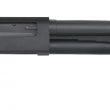
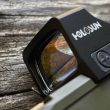
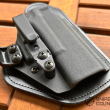
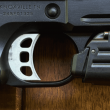
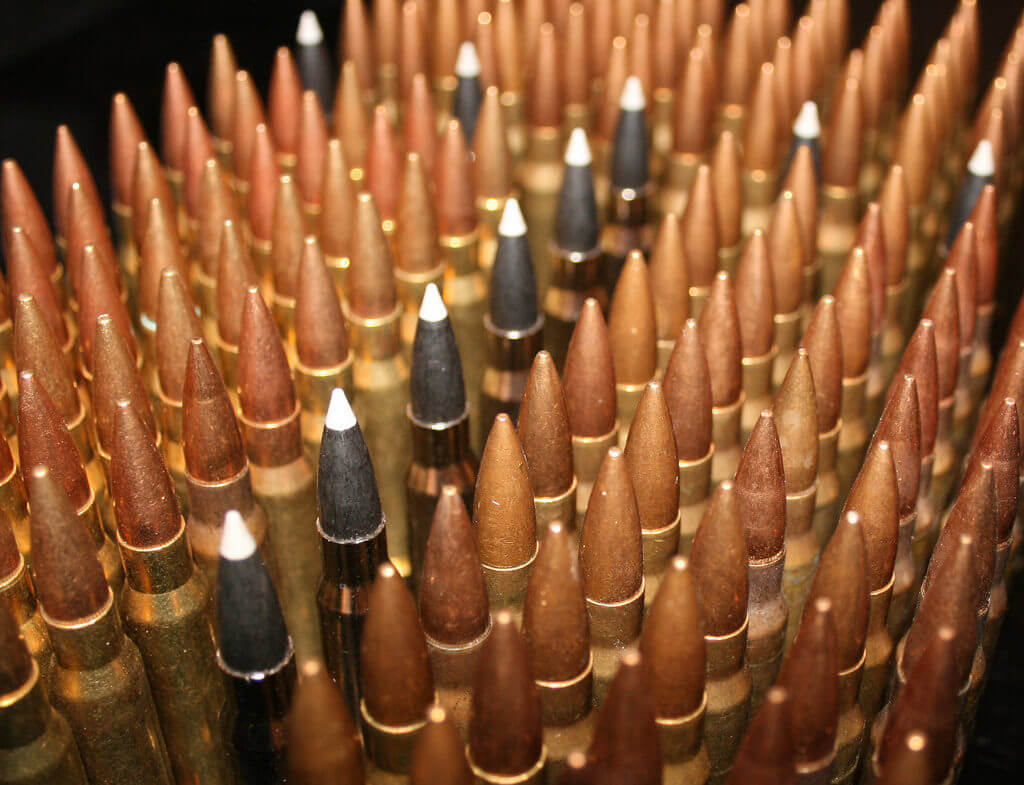
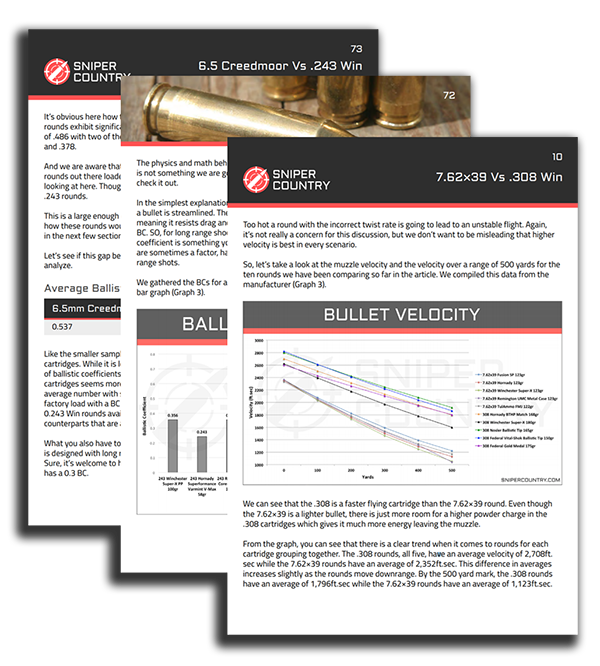

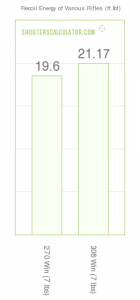
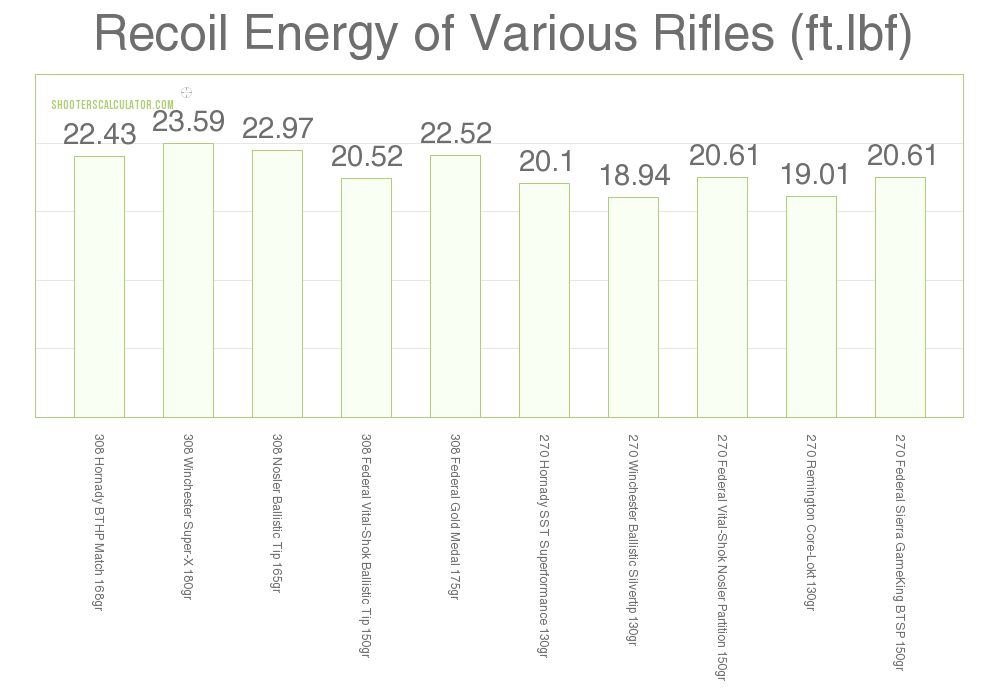
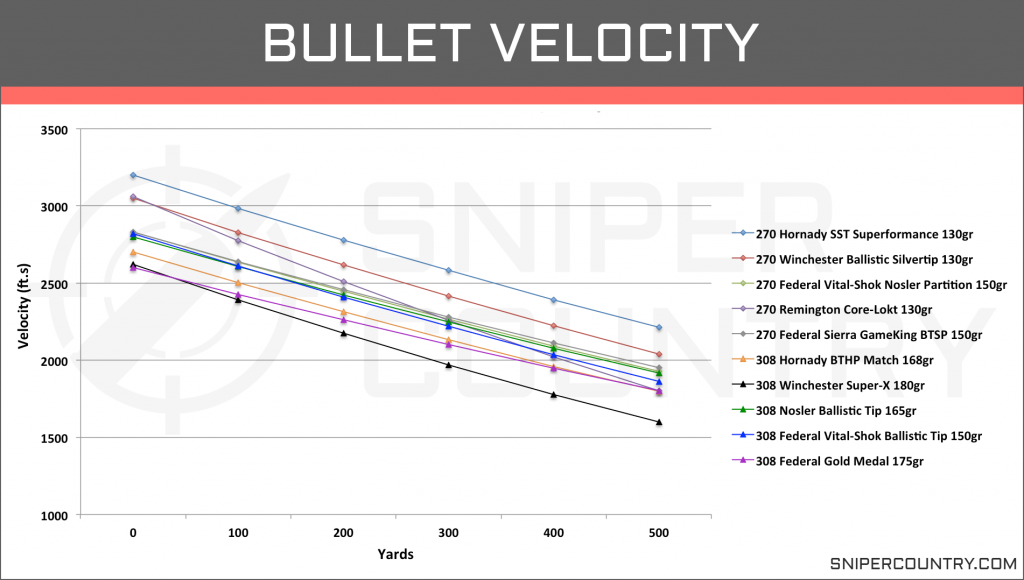
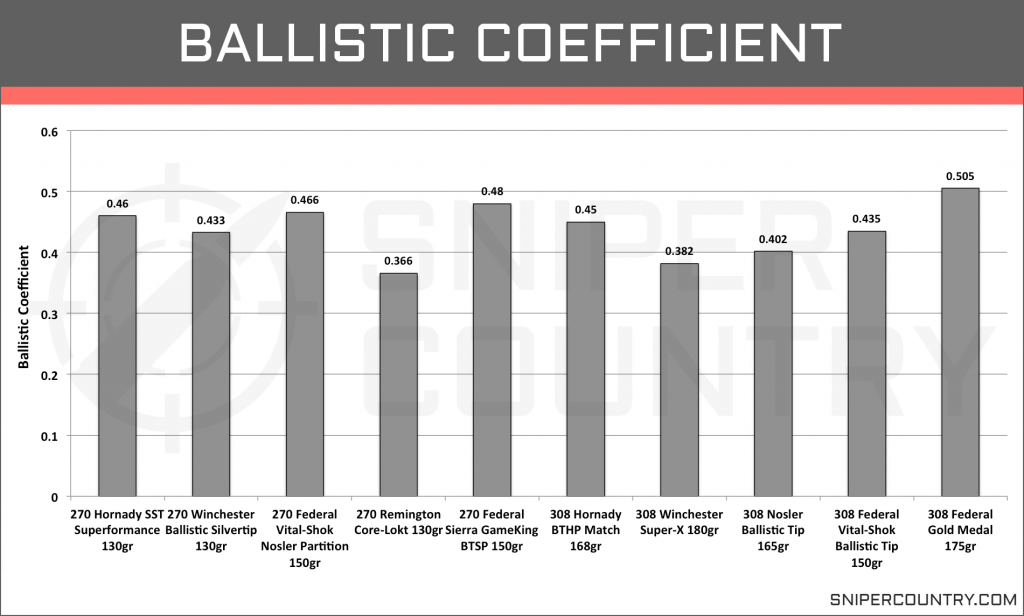
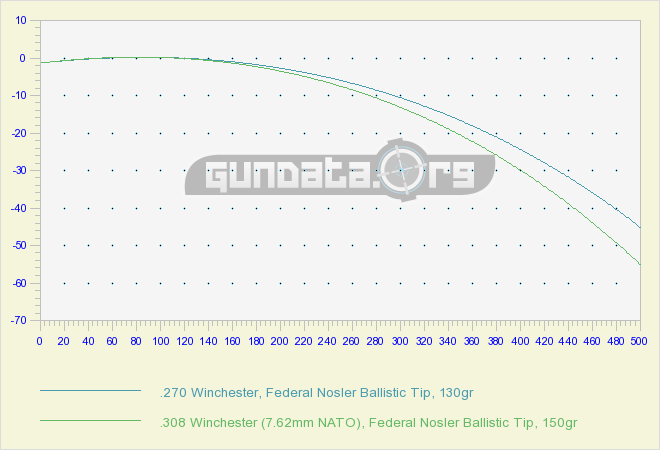
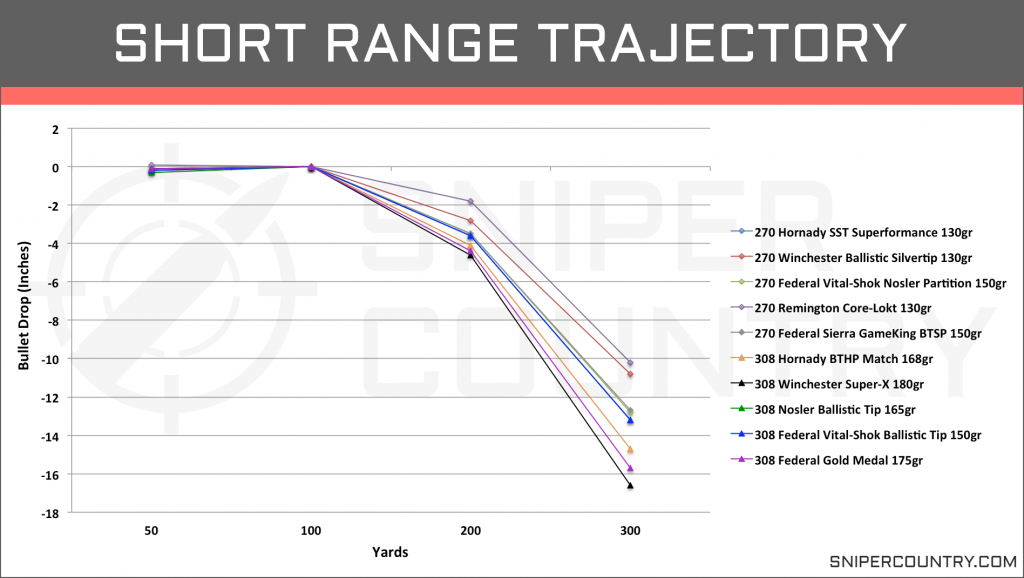
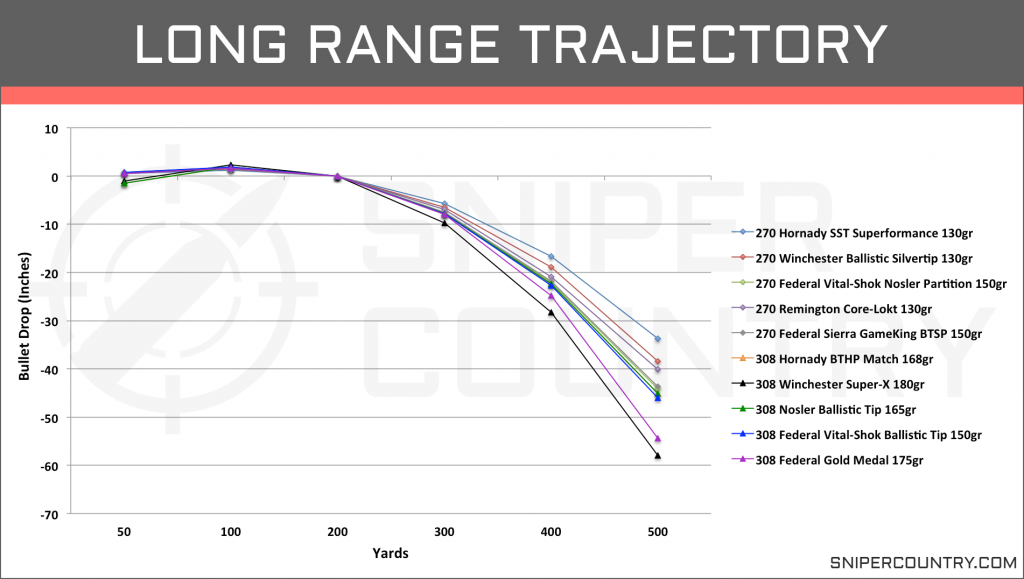
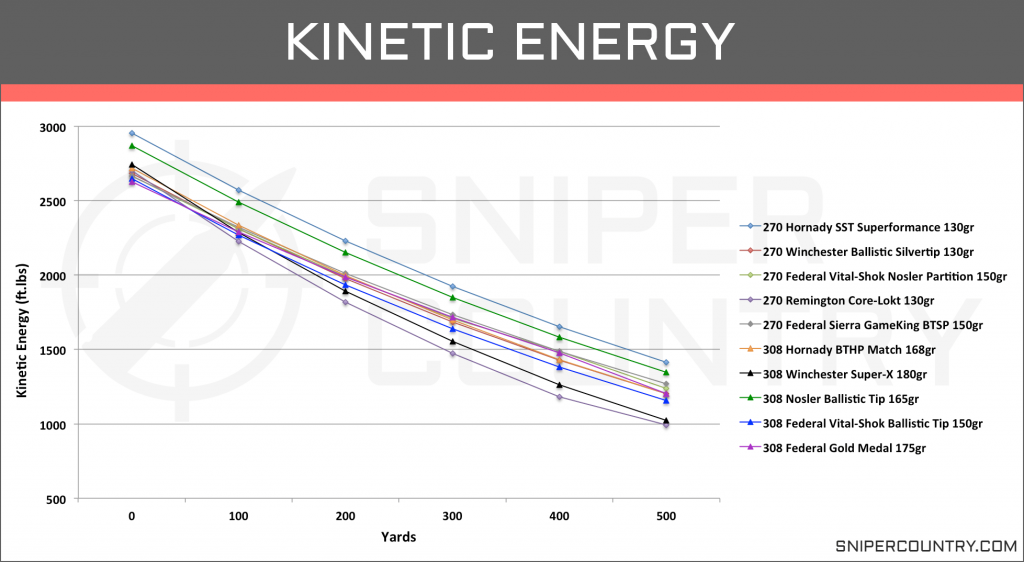
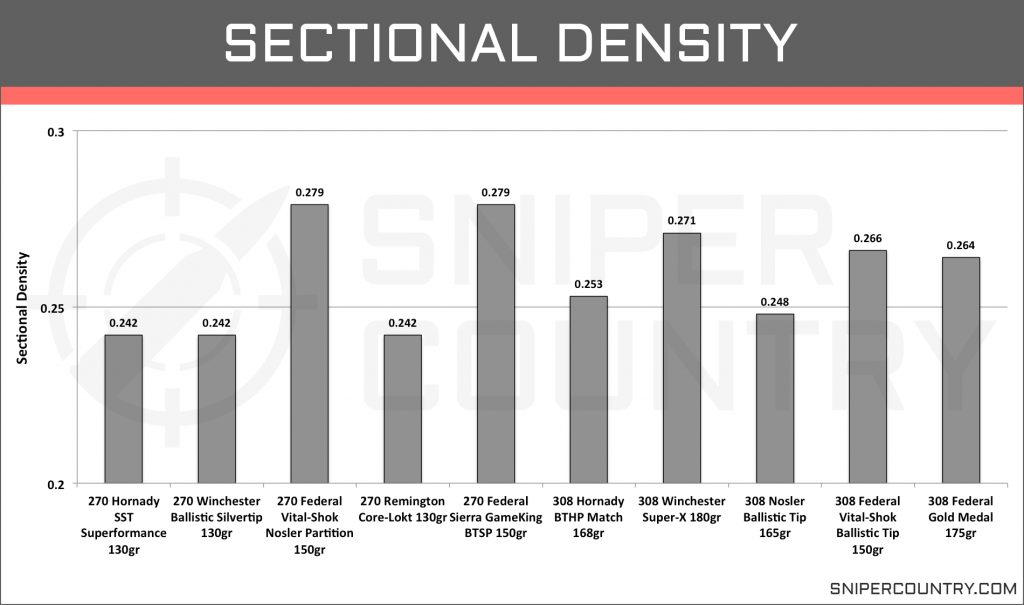
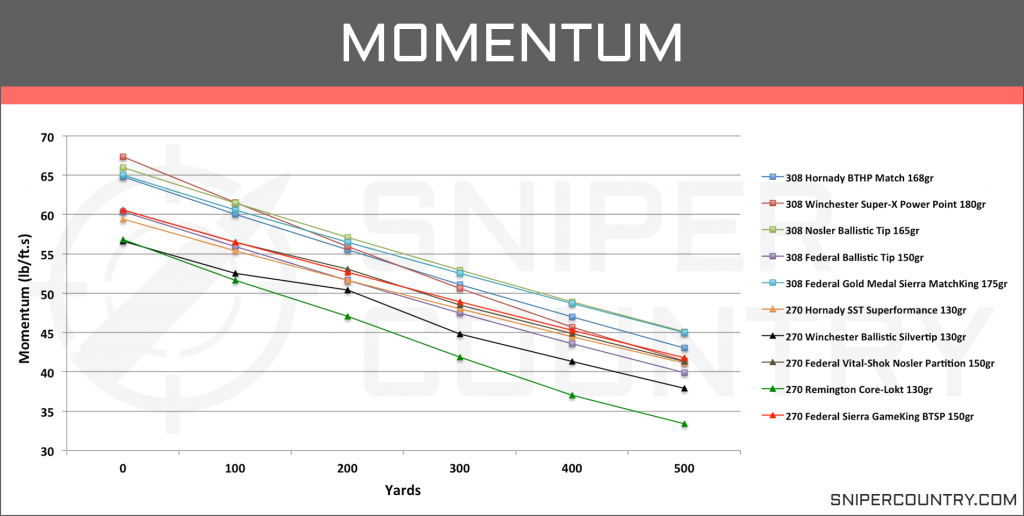
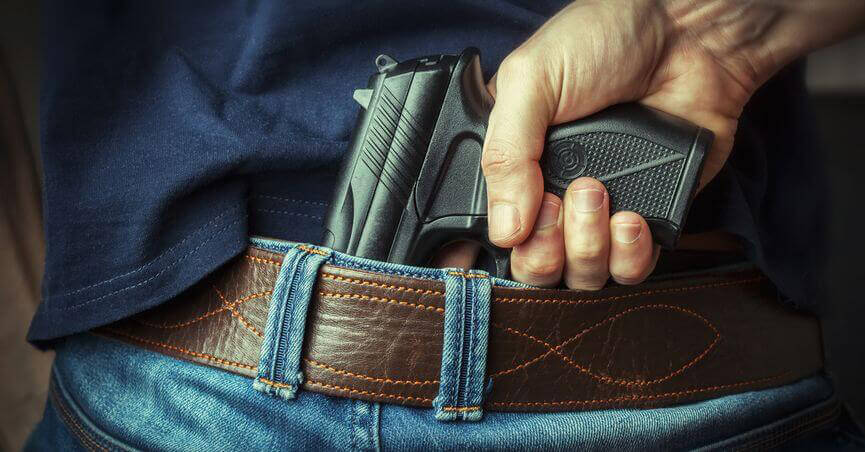
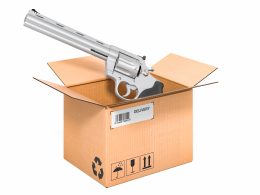
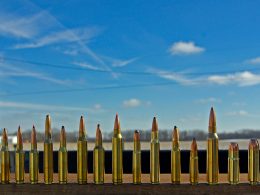
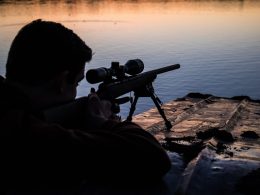
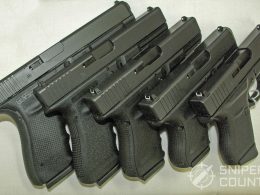
I have been using both of these calibers over the last few years and have had success with both of them but I have been using my 270 since before I was old enough to drive and it is my favorite go to gun. I have dropped everything from bobcats to elk with my 270 and I used 130 gr on everything bu the elk I used 150 gr that season and from what I have figured out and read the 270 was meant to shoot the 130 gr round it just out performs the rest and has enough power to get the job done several times over. I have had whitetail make strange moves at the time of my shot and have what I would call a bad shot on them and they still drop dead even from shots I was embarassed I made the energy that comes from that bullet and the pure shock seems to do a ton of damage to Texas whitetail and everything else I have taken with that rifle.
Bullet speed means a lot in killing animals
You mention the 130 gr out performs the 150. It must be noted that each gun is different. My old Remington 721 cambered in 270 shoots a tighter grouping with 150 gr bullets than 130 gr. My brother’s savage is the opposite.
For me its .308 all the way. Makes a bigger hole for a better blood trail vs .270.
When you shoot deer sized animals in the chest with a 130 gr BST .270 there is NO blood trail. They dont take steps they just drop. I shoot a .308 also.
I have used the 270 Winchester for years … I have taken alot of Whitetails and a few black bear over the years with the 270
I use Federal 150gr RN
Its not a very popular choice.. But I like the way the heavy /long 150gr RN opens up fast and pentrates deep … and exits with a much larger hole than the entrance .
Round nose work good for more of a brushy area For sure
A couple of things that have not been mentioned which should be considered if they effect you. I have both 270 and 308. An advantage of the 308 for me is it can have a shorter barrel which makes it handier in thick bush or in a vehicle. A 308 can have a barrel of down to 16.5 inches whereas a 270 would lose too much velocity . The other advantage of the 308 is it is definitely quieter when shooting in settled areas.
I still use and like both cartridges. Just mt experience.
This article was meticulously researched and extremely well written. Thank you so much!
Really? Then which bullet is it? Is it Hornady SST or Winchester SST? Re-read and you’ll see where the copy/paste then typing got befuddled.
Great charts though. Excellent!
Thanks for all the great information. I appreciate the data and not being biased in this breakdown. I’m looking at getting a rifle for antelope but wanted to be able to use it for elk as well. Sounds like the .270 is a great option.
Excelente articulo!!!! Saludos desde Argentina!!
I’m up in Canada. Ontario to be exact. It is not uncommon to come across 400 lbs plus black bear and large bull moose. The gun will be used for black bear and moose. I’m leaning towards the .308 since I can get a 180 grain bullet. I keep getting tempted by the .270 since I often get deer on the hydro line and have made some long shots. I own a 22-250 and like its accuracy, I like the idea of another flat shooting round. I’ll be getting a .308 though since the bear and moose I’ll be seeing will be in the bush likely within 20 to 100 yards. I also can’t see myself shooting more than 300 yards. I thought this was a great article with good information on the different calibers and the ballistics of the different rounds. Thanks.
Just get them both better to have and not need than need and not have
You can get 270 bullet weights from 85 to 180 grains. Nosler makes a 160 gr. Partition bullet that will drop any moose or black bear God ever put on this Earth.
I bought a 30-06 today. I talked it over with my Dad, who is a butcher that has cut up hundreds and hundreds of deer and moose. He said that if I’m looking to drop the biggest of game then I may as well not screw around. Bought 150 grain bullets for deer and 180 grain for bear and moose. Savage makes a lower end 30-06 that is 6.5 lbs. if I get another rifle I’d get a decent 270 and a high end scope for long range shooting. The reality is that I’m more likely to get charged by a big bull than make any 300 yard plus shot where I’m living. Thanks for the input. These forums are very helpful.
Congratulations on your purchase! You can’t go wrong with a 30/06. Practice enough to become intimately familiar with your new rifle. Also, be aware that using a light rifle like the Savage will make recoil more noticeable. Be careful that you do not develop a flinch. Enjoy!
Thanks! I developed a bit of a flinch when I was working as a Bear Technician shooting rifled slugs through a Remington 870. I had to train myself to be fluid and calm. I remember sighting in the shotgun with a box of shells. A few days later I was trying to wash the dirt off my shoulder. But it was just bruised. Haha. I’m excited for the 30-06. I’m going to probably sight it in 0 at 200 yards. That should do me. I will see how it performs in itself and adjust accordingly. I’ve got lots of big bears in my neck of the woods.
Excellent info and comparison
If you keep in mind how small the .308Win actually is and how little case capacity and pressure there is, you’ll have to wonder how it even gets anywhere close to .270Win performance. Credits where credits are due, that’s one efficient little 30cal caliber.
Seing how far those two are apart spec-wise (size, capacity, pressure):
Its roughly equivalent to comparing the 270 to a .264WinMag in +P if there was such a thing.
Would the latter offer better ballistics? For sure. Is it worth burning barrels and powders at such a rate?
->Depends on application.
i have both .270 and 7.62 nato .308 my son likes the .270 over .308 i like the other way but it all gopes back to shoot placement we live in australia my .270 at about 150 yds with 150 grn federal power shock destroys a kangaroo but he can still jump 100 odd yards if he stareted to move when shot not bortherd with .308 when we go to deer will take both and see what happens
I’ve always been a big fan of the 270. My old man’s go-to hunting rifle was a Winchester Model 70 Featherweight that i liked so much, when i turned 18 i bought the exact same rifle. One things for sure though, the amount of recoil with a featherweight model 70 is a whole different world than on a standard Model 70. It’s great to hunt with but when bench shooting i have to adjust my position so i sit more upright, making it easier to roll back with the rifle. I found the technique also very helpful when shooting a friends 416 Rigby.